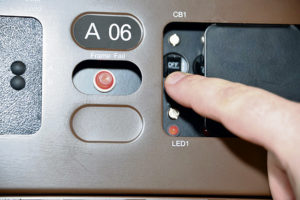
Innovation is alive and well in the men and women of the 65th Air Base Group, Lajes Field, Azores, Portugal. This strategic power projection platform supports five combatant commands by providing enroute support to global operations and Department of Defense communications. Doing more with less and finding new, innovative ways is the norm at this geographically separated unit.
During the 2015 downsizing at Lajes Field, excess infrastructure was identified to be returned to the Portuguese government. In line with that consolidation effort and the 2023 Area Development Plan, building T-205 needed to be deactivated.
Currently, building T-205 houses the Meridian-SL legacy phone switch, which runs many of the bases’ systems on copper cable. One of Lajes Field’s primary capabilities, strategic communications, is performed through the communication systems housed within T-205. Among other things, these systems enable Defense Switched Network (DSN) capabilities for aircraft transiting the Atlantic Ocean. Needless to say, the importance of this infrastructure and its final disposition is of paramount importance to overall mission success.
U.S. Air Force Staff Sgt. Andrew Crafts and his team in the 65th Air Base Squadron’s network management and infrastructure shop engineered an innovative solution that not only allows the 65th ABG to return the property two years early to the host nation, but also saves the U.S. Air Force $147,000 annually.

Understanding that the communications equipment had degraded, and was well beyond its recommended end of life cycle, Crafts coordinated with the High Frequency Global Communications System Program Management Office at U.S. Air Forces in Europe and developed a fiber alternative for the air-to-ground capability. This included running new cable and identifying unused connection points to complete the circuit.
While these actions may seem simple, the process had to ensure a continued platform for communications while filtering through infrastructure that was over 40 years of age and poorly identified.
As a result, Lajes can decommission an unneeded $3.7 million MSL-100 unit and improve global air-to-ground calling capabilities through their area of responsibility that tracks more than 100,000 transatlantic flights per year.
This innovation project garnered the attention of the USAFE leadership and was highlighted by the Innovation Transformation Council. Ramstein’s Continuous Process Improvement Office is responsible for coordination of innovation projects and recognized the 65th ABS during its quarterly meeting.
For more information, call the 65th Air Base Group Public Affairs Office at +351-295-57-6161 or email 65abg.pa@us.af.mil.


